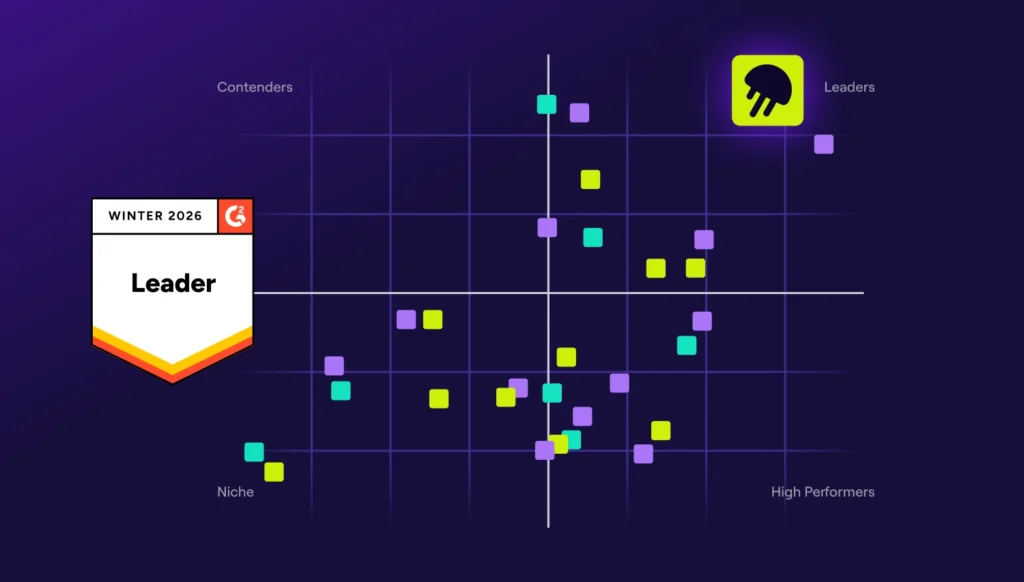Driving Smarter Growth: How Quantexa Boosted Engineering Focus and Velocity
Jellyfish Products Used:
Engineering Management Platform
Before Implementing Jellyfish
No insights into engineering resource allocations
Context switching and engineers pulled in different directions
C-suite lacked visibility into engineering activities
After Implementing Jellyfish
Engineering investments aligned with business priorities
Improvements in cycle time, number of commits, and PR throughput
Data-driven discussions with stakeholders and PE sponsor
Quantexa helps organizations build a connected, contextual, and AI-ready data foundation for informed decision-making. Industry leaders and government agencies rely on Quantexa’s outcome-driven solutions to enhance their customer experience, manage enterprise risk, and detect and prevent criminal activity. Ian Lees, Director of Engineering at Quantexa, has experienced the company’s growth firsthand. Lees has been at Quantexa from the start, joining the six founders and just a handful of employees as they began building the first versions of their software. Nearly ten years after the company’s founding, Lees oversees more than twenty engineering teams.
To scale effectively, Quantexa needed to expand its toolset beyond Jira — pulling data into spreadsheets was time-consuming and offered limited insights. Without visibility into the costs of support, maintenance, and other ad-hoc tasks that can be difficult to quantify, they were unable to accurately allocate engineering resources across projects and priorities. “We could loosely say that a team had spent 60% of their time working on one thing and 40% on another, but they were big blocks of project work,” explained Lees. “It was hard, we were guessing, and there was so much that we were missing.”
With Quantexa growing fast, it adopted Jellyfish to gain visibility into resource allocations and focus engineering efforts on delivering value to their customers.
Aligning resources to strategic priorities
At growing companies like Quantexa, there’s no shortage of good ideas. However, working on too many things at once risks diverting focus away from strategic priorities. Jellyfish helps managers assess whether teams are building features that add value or trying to do too much at once. As Lees explained, this focused approach has also led to happier engineering teams: “Moving on to the next shiny thing before fully finishing something else is frustrating and unsatisfying for engineers who want to deliver value to customers.”
Visibility into how engineers spend their time is driving meaningful stakeholder discussions. Using Jellyfish data, engineering leaders can show how resource allocations align with strategic priorities and prevent teams from being pulled in different directions. “If you agree with the overall product strategy, it’s kind of hard to argue with,” said Lees. “Data brings trust — stakeholders see and believe the numbers.”
At the executive level, Quantexa’s C-suite wants to understand what they’re getting out of their increasing engineering investments. By breaking open the engineering “black box,” Jellyfish allows executives to see how teams operate and where they’re making an impact. Jamie Hutton, CTO at Quantexa, uses Jellyfish to drive conversations at the board level. “We use Jellyfish to report on overall splits of the team across roadmap initiatives vs maintenance and operations. We take the roadmap work and split it by product initiative so the board can see where we are investing the money,” he shared. Hutton also uses Jellyfish to unlock conversations with their PE investor, Warburg Pincus.
Jamie Hutton Chief Technology OfficerUsing Jellyfish allows us to answer questions around developer efficiency and effectiveness and be able to report on it over time to spot trends and issues.
Measuring the impact of DevEx investments
Creating valuable solutions for Quantexa customers is the engineering organization’s top priority. To help them achieve this, they set up an internal developer tooling team to build and maintain the tools, systems, and processes developers need to work efficiently and at speed. Quantexa is also investing in the CI/CD infrastructure and standardizing developer workflows to allow for faster, more reliable releases.
For these investments to make sense, engineering leaders must be able to measure their impact. Improvements in key metrics, including cycle time, number of commits, and pull request throughput — all of which they are tracking in Jellyfish — show their initiatives are having the desired effect and deserve continued investment.
“All engineering departments should seek to be data-driven, otherwise, we are just guessing,” explained Lees.
Ian Lees Director of EngineeringWithout Jellyfish, we would be unable to measure improvements and determine whether our work is paying off.
Capacity planning for a growing organization
Looking forward, Quantexa plans to use Jellyfish capacity planning to become even more data-driven. “We want to push Jellyfish insights further into the future,” explained Lees. “They’re really good at the past and pretty good at the present. Now, we want to use those insights to support our long-term decision making.”
Accurate capacity forecasts will help Quantexa’s engineering organization set realistic workloads and prevent overcommitment. That predictability is especially important as the company gets bigger and more complex. “We can’t have a bad month or miss our deadlines; we need to be reliable,” said Lees. “Capacity planning is key.”
Jellyfish data will also help Quantexa make sense of an evolving engineering landscape. Quantexa is tracking GitHub Copilot Impact, but, as Lees points out, that’s just the beginning.
“We’re seeing more and more AI tooling, and we need to be able to measure their impact,” said Lees. “It’s amazing technology, but does it actually help us deliver more value?”





